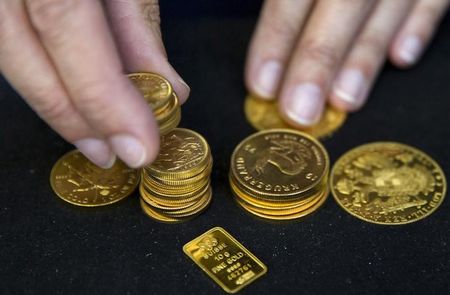Commodities
How to invest in gold and silver using Prepper Bars

Gold and silver have captivated investors for centuries, offering a potential hedge against inflation and economic uncertainty. Whether you’re a seasoned investor or just starting out, these precious metals can add a layer of diversification to your portfolio.
Precious Metal Prices Today
Gold has performed very well in 2024, climbing over 13% in the year-to-date as investors anticipate potential Federal Reserve rate cuts. Given the recent uncertainty on the timing of those cuts, the price has pulled back from its May high of $2,450 and currently sits around the $2,334 mark.
Silver has also climbed since the start of the year, rising above $32 in May. However, it has also pulled back more recently and currently trades close to the $29 level.
Gold Price Forecast 2024
According to Jonathan Rose, a 20-year financial consultant with a Series 3 commodity license and the co-founder/CEO of Genesis Gold Group, the “political and economic climate in the United States, today is one of the driving factors for the increasing prices of precious metals like gold & silver.”
Rose, who has developed the Prepper Bar, adds that “as mining production has failed to increase over the past few years, industrial demand has skyrocketed. As a result, the majority of economists predict that we are in for a strong precious metals market over the next few years.”
Meanwhile, Bank of America strategists said in a recent note that three factors could strengthen the case for the commodity market into 2025, citing takeaways from the 2024 Virtual Commodity Conference held last week.
Panelists who attended BofA’s event said the resurgence of inflation, alongside trends like Decarbonization, Deglobalization, and advancements in Data centers and AI have all strengthened the outlook for commodities in recent years, with the experts particularly favoring , gold, and soft commodities.
Precious Metal Investment: Consider Prepper Bars
Rose believes Prepper bars could be a solution for those wanting to invest in gold and silver.
“Picture this: The U.S. Dollar has crashed. Cyberattacks have rendered cashless payments useless. You just need to purchase gas. Or you are oversees with no money or credit cards available. Made in the USA and IRA-eligible, the wallet-sized silver bar operates the same way you would tear off a rectangle from a bar of chocolate,” he explains.
Rose states they are “a minting innovation,” providing consumers with the flexibility of both a large and small gram bar.
“The bar offers portable wealth with easily tearable rectangles, perfect for collecting or for conducting emergency transactions,” adds Rose, who says that as mining production has failed to increase over the past few years, industrial demand has skyrocketed.
Rose says, “The Prepper Bar is an answer to questions asked by precious metals enthusiasts for years.”
He continues: “The unique design of the bar itself allows for it to be easily broken down into 3 different denominations for maximum utility in barter or trading. As the value of the dollar continues to fall, many folks have found themselves looking for alternatives to the existing currency, and we believe the Prepper Bar satisfies those needs.”
The precious metals enthusiast believes his Prepper Bar product offers portable wealth and is easily accessible as it is designed to fit into wallets. “The unique ability to carry precious metals in a form that is breakable and slim enough to be carried at all times adds even more value to the product,” he concludes.
Learn more about the best Gold ETFs
Gold, often seen as a safe haven asset, serves as a hedge against inflation, currency fluctuations, and geopolitical uncertainties. Investing in Gold Exchange-Traded Funds (ETFs) provides a convenient way to gain exposure to this precious metal without the complexities of physical ownership.
Commodities
Oil prices rise; U.S. crude inventories plunge, Russia-Ukraine truce eyed
Commodities
India’s Reliance to stop buying Venezuelan oil over US tariffs, sources say
Commodities
Oil prices climb on Venezuela supply worries

 Forex3 years ago
Forex3 years agoForex Today: the dollar is gaining strength amid gloomy sentiment at the start of the Fed’s week

 Forex3 years ago
Forex3 years agoUnbiased review of Pocket Option broker

 Forex3 years ago
Forex3 years agoDollar to pound sterling exchange rate today: Pound plummeted to its lowest since 1985

 Forex3 years ago
Forex3 years agoHow is the Australian dollar doing today?

 Cryptocurrency3 years ago
Cryptocurrency3 years agoWhat happened in the crypto market – current events today

 World3 years ago
World3 years agoWhy are modern video games an art form?

 Commodities3 years ago
Commodities3 years agoCopper continues to fall in price on expectations of lower demand in China

 Economy3 years ago
Economy3 years agoCrude oil tankers double in price due to EU anti-Russian sanctions

























